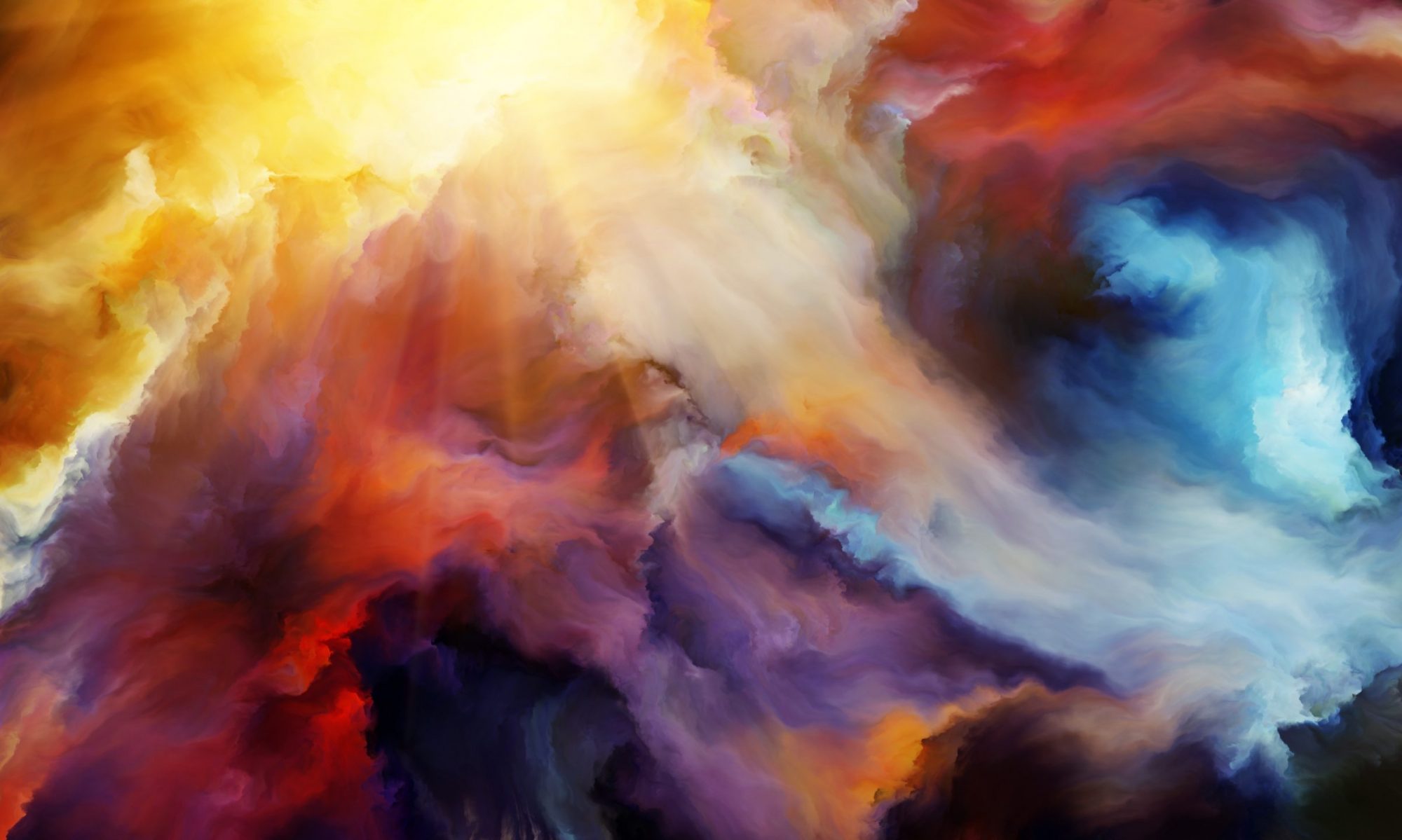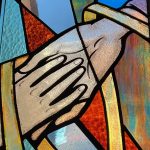 Alan Sumner mbe (1911-1994) was a painter, printmaker, teacher and stained-glass designer. After studying at the NGV school, RMIT and the George Bell School in the early 1930s, Sumner travelled to Europe and the UK, furthering his training at the Grand Chaumière and the Courtauld Institute. Returning to Melbourne, he took up an apprenticeship as a stained-glass designer with Brooks Robinson before becoming a designer for Yenckens. He taught painting at the NGV school from 1947 to 1950 and spent nine years as Head of School from 1953 onward. Meanwhile, over the course of his career he completed approximately 100 commissions for windows in Melbourne and internationally. (National Portrait Gallery, Canberra, 2018). Continue reading “ALAN SUMNER – Stained Glass”
Alan Sumner mbe (1911-1994) was a painter, printmaker, teacher and stained-glass designer. After studying at the NGV school, RMIT and the George Bell School in the early 1930s, Sumner travelled to Europe and the UK, furthering his training at the Grand Chaumière and the Courtauld Institute. Returning to Melbourne, he took up an apprenticeship as a stained-glass designer with Brooks Robinson before becoming a designer for Yenckens. He taught painting at the NGV school from 1947 to 1950 and spent nine years as Head of School from 1953 onward. Meanwhile, over the course of his career he completed approximately 100 commissions for windows in Melbourne and internationally. (National Portrait Gallery, Canberra, 2018). Continue reading “ALAN SUMNER – Stained Glass”
LOUIS LAUMEN, Sculptor
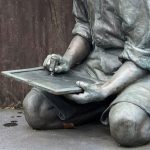 In the course of history, sculptors have played a key role in representing, immortalising and honouring those who have helped shape the national, sporting, religious or cultural identity of a country. In Australia, one of the most popular and prolific creators of public sculpture is Melbourne-based Louis Laumen. Professional artist since 1995, Laumen has received over fifty commissions for bronze statues of sporting or war-time heroes and popular public figures, as well as a large number of religious works. Continue reading “LOUIS LAUMEN, Sculptor”
In the course of history, sculptors have played a key role in representing, immortalising and honouring those who have helped shape the national, sporting, religious or cultural identity of a country. In Australia, one of the most popular and prolific creators of public sculpture is Melbourne-based Louis Laumen. Professional artist since 1995, Laumen has received over fifty commissions for bronze statues of sporting or war-time heroes and popular public figures, as well as a large number of religious works. Continue reading “LOUIS LAUMEN, Sculptor”
PATRICK HENIGAN – Devoted to God, St Francis and Art
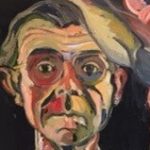 At his 10-year survey exhibition held at the Mornington Peninsula Art Centre in 1989, Br Patrick Henigan ofm was hailed in the introduction to catalogue as the ‘Don Robert of Australia’. Don Robert, the celebrated Benedictine monk and painter, was seen as the conscience of the French Lurcat tapestry revival in the late 1940s: so Hennigan may be dubbed as the conscience of the new spirit that evolved in Australian drawing from the late 1970s. His spiritual and artistic journey to gain this recognition, however, was hard fought. Continue reading “PATRICK HENIGAN – Devoted to God, St Francis and Art”
At his 10-year survey exhibition held at the Mornington Peninsula Art Centre in 1989, Br Patrick Henigan ofm was hailed in the introduction to catalogue as the ‘Don Robert of Australia’. Don Robert, the celebrated Benedictine monk and painter, was seen as the conscience of the French Lurcat tapestry revival in the late 1940s: so Hennigan may be dubbed as the conscience of the new spirit that evolved in Australian drawing from the late 1970s. His spiritual and artistic journey to gain this recognition, however, was hard fought. Continue reading “PATRICK HENIGAN – Devoted to God, St Francis and Art”
Honouring God’s Creation
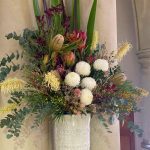 Flowers in Church
Flowers in Church
One decorative item that plays an important atmospheric role in liturgical contexts is the floral arrangement. Natural flowers and plants have long been associated with celebrations of the liturgy – Eucharist, weddings, funerals – as well as devotions associated with the Blessed Virgin Mary and the Blessed Sacrament. This tradition sits well with influential voices such as Pope Francis; his encyclical Laudato Si’ has called for a renewed appreciation for the natural world as God’s gift, a blessing that is vital for our common, human life but also one that is vulnerable to misuse. Continue reading “Honouring God’s Creation”
With Eyes Able to Contemplate
 John Hawes and Margaret Rope
John Hawes and Margaret Rope
That is why artists, the more conscious they are of their ‘gift’, are led all the more to see themselves and the whole of creation with eyes able to contemplate and give thanks, and to raise to God a hymn of praise (John Paul II, Letter to Artists, 1999, no 1). Continue reading “With Eyes Able to Contemplate”
RON MUECK: Life and Death
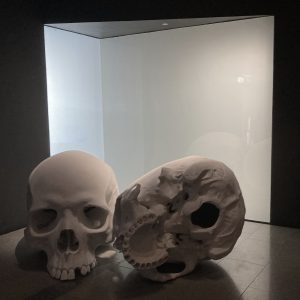 Over the last twenty-five years, Australian artist, Ron Mueck (b. 1958), has become well-known for his hyper-realistic sculptures, generally of the human figure either much larger or smaller than life size. Every hair is painstakingly inserted in an eyebrow or a stubbly beard. Whether it is an enormous boy or pregnant woman, whether it is a miniature image of his dead father laid out naked, the sculptures create a sense of awe, wonder and contemplation in the viewer. Continue reading “RON MUECK: Life and Death”
Over the last twenty-five years, Australian artist, Ron Mueck (b. 1958), has become well-known for his hyper-realistic sculptures, generally of the human figure either much larger or smaller than life size. Every hair is painstakingly inserted in an eyebrow or a stubbly beard. Whether it is an enormous boy or pregnant woman, whether it is a miniature image of his dead father laid out naked, the sculptures create a sense of awe, wonder and contemplation in the viewer. Continue reading “RON MUECK: Life and Death”
GAIA, Earth
 by Luke Jerram
by Luke Jerram
The mighty sphere of the earth rotates slowly, suspended under the gothic arches of St Paul’s Cathedral in Melbourne. Seven metres in diameter and internally lit, it has been created to scale by Luke Jerram from detailed NASA imagery of the earth’s surface. (It is 1.8 million times smaller than the real earth.) Continue reading “GAIA, Earth”
Interesting References
 The website of the Australian Catholic Historical Society is set up in sections and curates some interesting resources. It provides links to websites, book reviews and other resources, sometimes with illustrations. Continue reading “Interesting References”
The website of the Australian Catholic Historical Society is set up in sections and curates some interesting resources. It provides links to websites, book reviews and other resources, sometimes with illustrations. Continue reading “Interesting References”
STORYTELLING IN PAINT
 Queenie McKenzie and the Spirit of Mary MacKillop
Queenie McKenzie and the Spirit of Mary MacKillop
Art in our churches is generally quite static. The way art is used in aboriginal communities is often very different. The Creation or Gospel story will be painted and then the work of art is used in the liturgy or in the classroom to proclaim the scriptures. The artist holds the painting and tells the story as shown in the painting. For this example we return to Warmun (see George Mung Mung, Mary of Warmun on this website). We turn to one of Australia’s most well-known and respected aboriginal artists, Queenie McKenzie (c. 1915–1988). This work was painted in 1994 at the time of Mary MacKillop’s beatification.
SACRED HEART CATHEDRAL, BENDIGO
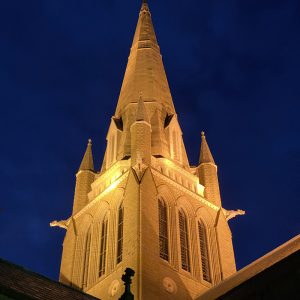 Windows for God’s Light
Windows for God’s Light
During two thousand years of Christianity, one of the more identifiable ‘archetypal’ forms of ecclesiastical architecture is that of the Gothic cathedral. The term ‘Gothic’ in relation to architecture is associated with light, due to a number of influential structural and stylistic features, namely, pointed arches, ribbed vaults and flying buttresses which stabilised the structure. These lessened the need for masonry walls and enabled the insertion of large, stained glass windows. Continue reading “SACRED HEART CATHEDRAL, BENDIGO”
